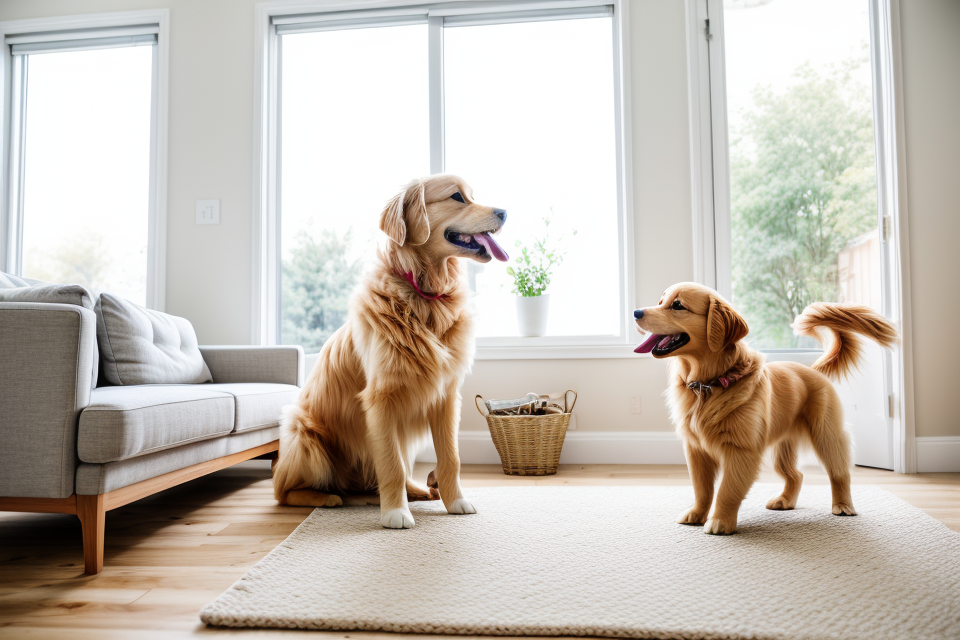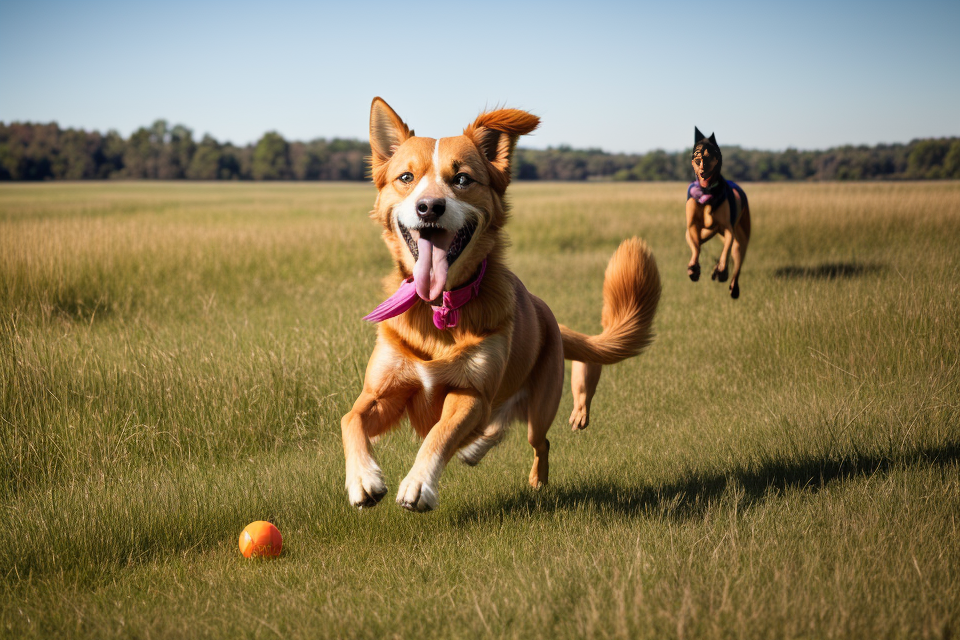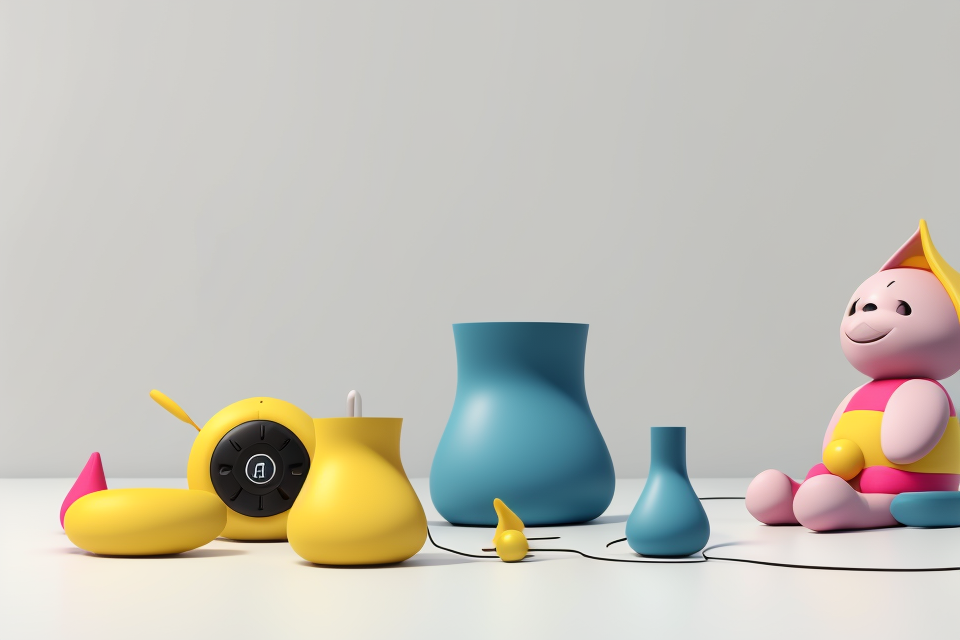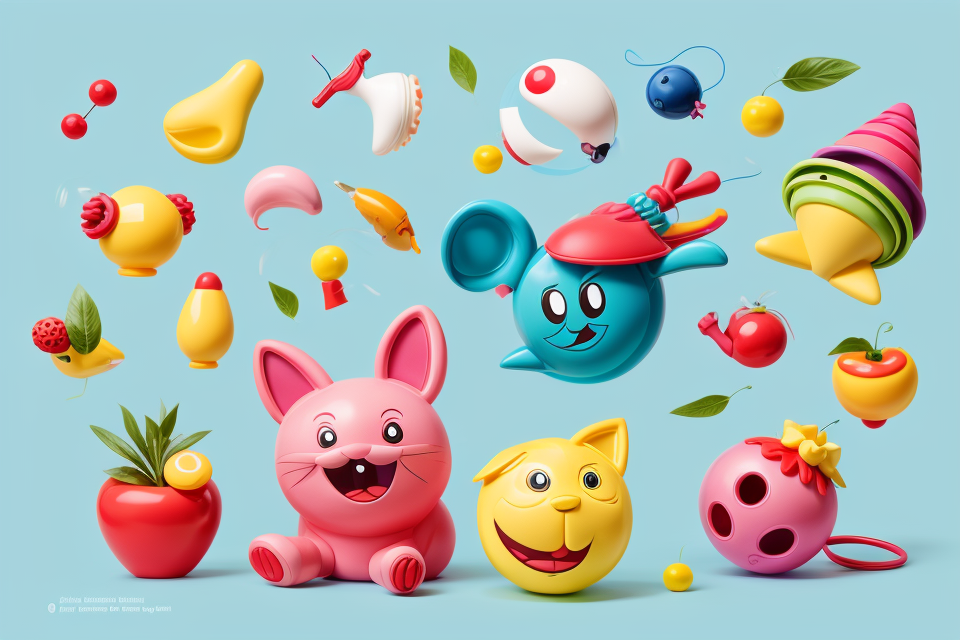Do dogs truly love squeaky toys or do they simply tolerate them? This is a question that has puzzled dog owners for years. Some dogs seem to go wild with excitement whenever they hear the sound of a squeaky toy, while others seem to ignore them completely. But what does the science say? In this comprehensive examination, we will delve into the world of canine behavior to uncover the truth about whether dogs really enjoy squeaky toys or not. So, buckle up and get ready to find out the answers to some of the most burning questions about our furry friends and their love for squeaky toys.
The answer to the question of whether dogs truly enjoy squeaky toys is subjective as different dogs have different preferences. However, many dogs do seem to enjoy squeaky toys as they provide a source of entertainment and can stimulate their natural instinct to chase and catch prey. The sound of the squeaker can also be appealing to dogs and can encourage them to play with the toy. It is important to note that not all dogs will enjoy squeaky toys and some may prefer other types of toys or no toys at all. Ultimately, it is up to the individual dog to decide whether they enjoy squeaky toys or not.
Understanding Squeaky Toys
Types of Squeaky Toys
When it comes to squeaky toys, there are several different types that dogs can enjoy. Here are some of the most common types of squeaky toys:
Plush Toys
Plush toys are a popular choice for dogs because they are soft and cuddly. These toys are typically made of fabric or fleece and are designed to be hugged and snuggled. Some plush toys also have squeakers inside them, which can provide additional entertainment for dogs.
Rubber Toys
Rubber toys are another type of squeaky toy that dogs love. These toys are typically made of a soft, flexible rubber material that is easy for dogs to chew on. Many rubber toys also have squeakers inside them, which can provide a fun, high-pitched sound that dogs find irresistible.
Stuffed Animals
Stuffed animals are a popular choice for dogs because they are often designed to look like real animals. These toys are typically made of fabric or plush material and are filled with soft stuffing. Some stuffed animals also have squeakers inside them, which can provide additional entertainment for dogs.
Overall, there are many different types of squeaky toys that dogs can enjoy. Whether your dog prefers plush toys, rubber toys, or stuffed animals, there is sure to be a squeaky toy that they will love.
Benefits of Squeaky Toys
- Stimulates Senses
- Improves Mental Health
- Provides Entertainment
Dogs have a heightened sense of hearing, which makes squeaky toys an ideal choice for them. The squeaking sound emitted by these toys is a form of auditory stimulation that can engage a dog’s attention and promote playful behavior. Moreover, the movement of the toy and the noise it makes can also stimulate a dog’s sense of touch and sight, providing a multi-sensory experience that is highly enjoyable for them.
In addition to stimulating a dog’s senses, squeaky toys also offer a range of mental health benefits. Playing with these toys can help to reduce stress and anxiety in dogs, as it provides a distraction from any negative experiences they may have had during the day. Additionally, squeaky toys can also help to improve a dog’s cognitive abilities, as they require the dog to use their problem-solving skills to figure out how to make the toy squeak. This can help to keep their minds active and prevent boredom, which can lead to destructive behavior.
Furthermore, squeaky toys provide entertainment for dogs, which is essential for their overall well-being. Dogs are naturally active animals, and providing them with appropriate forms of entertainment can help to satisfy their need for mental and physical stimulation. Squeaky toys offer a fun and engaging way for dogs to expend energy and have fun, which can help to reduce the likelihood of them becoming bored or restless. Overall, the benefits of squeaky toys for dogs are numerous, making them an ideal choice for pet owners looking to provide their furry friends with appropriate forms of play and entertainment.
Dog Behavior and Squeaky Toys
How Dogs Interact with Squeaky Toys
When observing dogs interacting with squeaky toys, several distinct behaviors can be observed. These behaviors can provide insight into the ways in which dogs engage with and respond to these types of toys.
- Excitement
Dogs often exhibit signs of excitement when interacting with squeaky toys. This may include tail wagging, barking, and jumping up and down. Some dogs may even spin or circle around the toy in a playful manner. - Aggression
In some cases, dogs may display aggressive behavior when interacting with squeaky toys. This can manifest as growling, snapping, or biting at the toy. It is important to note that this behavior is typically play-driven and not a sign of aggression towards the owner or other humans. - Destruction
Finally, some dogs may engage in destructive behavior when interacting with squeaky toys. This can include chewing, shredding, or otherwise destroying the toy. This behavior may be due to the dog’s strong desire to interact with the toy, as well as their natural instinct to manipulate and explore their environment.
Squeaky Toys vs. Other Toys
Comparing Squeaky Toys to Traditional Toys
Durability
When comparing squeaky toys to traditional toys, one aspect that stands out is their durability. Traditional toys are often made of sturdy materials such as plastic or metal, while squeaky toys are typically made of softer materials like rubber or plush fabrics. This means that traditional toys can withstand more wear and tear and last longer than squeaky toys. However, it’s worth noting that some squeaky toys are designed to be indestructible and can still provide a long-lasting source of entertainment for dogs.
Sound
Another key difference between squeaky toys and traditional toys is the sound they make. Squeaky toys, as the name suggests, produce a distinctive squeaking sound when played with. This sound can be very appealing to dogs and can stimulate their natural instinct to chase and catch prey. Traditional toys, on the other hand, do not produce a squeaking sound and rely more on their shape and texture to provide stimulation.
Versatility
In terms of versatility, squeaky toys and traditional toys offer different benefits. Traditional toys are often designed for specific types of play, such as fetch or tug-of-war. They can also be used for training and teaching dogs new skills. Squeaky toys, on the other hand, are often more versatile and can be used for a variety of purposes, including play, comfort, and even as a tool for separation anxiety. Additionally, squeaky toys can be hidden in various locations and used for scent work, which can be a fun and engaging activity for dogs.
Overall, while traditional toys have their own benefits and advantages, squeaky toys offer a unique combination of sound, versatility, and comfort that many dogs find irresistible.
Squeaky Toys vs. Non-Squeaky Toys
When it comes to the comparison between squeaky toys and non-squeaky toys, there are several factors to consider.
- Noise Level: Squeaky toys are distinct in their noise level. The sound produced by a squeaky toy is unique and attention-grabbing. Non-squeaky toys, on the other hand, do not produce a similar noise level. They may make some noise when bitten or chewed, but it is not as loud or as distinct as a squeaky toy.
- Distraction: Squeaky toys are known to be very distracting for dogs. The sound of the squeaker can be so appealing that dogs will often stop what they are doing to investigate the noise. Non-squeaky toys, while still fun for dogs, do not have the same level of distraction.
- Appeal: Squeaky toys are known for their ability to keep dogs entertained for long periods of time. The sound of the squeaker can be so engaging that dogs will continue to play with the toy even after it has been chewed on. Non-squeaky toys, while still fun, may not have the same level of appeal as a squeaky toy.
Overall, while both squeaky and non-squeaky toys can be enjoyed by dogs, squeaky toys tend to be more distracting and appealing to dogs. This is likely due to the unique noise level and engaging sound produced by squeaky toys.
Training and Socialization with Squeaky Toys
Teaching Commands
Training and socializing your dog with squeaky toys is an excellent way to strengthen the bond between you and your furry friend. Teaching your dog commands is an essential part of this process. In this section, we will discuss the two most important commands that you should teach your dog when it comes to squeaky toys: “Drop It” and “Leave It.”
“Drop It” Command
The “Drop It” command is an essential command that you should teach your dog when it comes to squeaky toys. This command will teach your dog to let go of the toy when you ask them to. To teach your dog the “Drop It” command, follow these steps:
- Start by holding a squeaky toy in your hand, and then show your dog the toy.
- Move the toy slightly out of reach, and then say “Drop It” in a firm voice.
- As soon as your dog drops the toy, praise them and give them a treat.
- Repeat this process several times until your dog understands the command.
“Leave It” Command
The “Leave It” command is another essential command that you should teach your dog when it comes to squeaky toys. This command will teach your dog to ignore the toy when you ask them to. To teach your dog the “Leave It” command, follow these steps:
- Hold a squeaky toy in your hand, and then show your dog the toy.
- Move the toy slightly out of reach, and then say “Leave It” in a firm voice.
- As soon as your dog looks away from the toy, praise them and give them a treat.
By teaching your dog these two commands, you will be able to prevent unwanted behavior, such as aggression or possessiveness, when it comes to squeaky toys. It will also help you to maintain control over the situation and prevent any accidents or injuries that may occur during playtime.
Encouraging Positive Behavior
- Playtime
- Interactive Play: Engage your dog in interactive play by using the squeaky toy as a tool for building a stronger bond. This type of play allows you to spend quality time with your dog while also promoting physical exercise and mental stimulation.
- Solo Play: Provide your dog with squeaky toys during solo playtime to keep them occupied and entertained when you are unavailable. This can help prevent boredom and destructive behavior.
- Reward-Based Training
- Positive Reinforcement: Use squeaky toys as a reward for good behavior during training sessions. This can help reinforce desired behaviors and encourage your dog to repeat them.
- Shaping Behavior: Use squeaky toys to shape desired behaviors by providing the toy as a reward for small steps towards the desired behavior. This can help your dog learn new tricks and commands more easily.
Overall, incorporating squeaky toys into your dog’s training and socialization routine can be a fun and effective way to encourage positive behavior and strengthen the bond between you and your furry friend.
Owner Perspectives and Squeaky Toys
Owner Experiences
As a dog owner, it’s natural to wonder whether dogs truly enjoy squeaky toys or if they’re just a passing fad. The answer is not as simple as one might think, as owners have had a variety of experiences with squeaky toys.
Enjoyment
Many dog owners report that their dogs love squeaky toys and seem to derive great pleasure from them. Some dogs become highly engaged and playful when they hear the sound of a squeaky toy, running around with it in their mouth and squeaking it whenever they can. Owners often find this behavior to be entertaining and heartwarming, as it showcases their dog’s playfulness and sense of joy.
Frustration
On the other hand, some owners report that their dogs seem to be frustrated by squeaky toys. These dogs may try to remove the squeaker from the toy, becoming agitated when they can’t get it out. This behavior can be concerning for owners, who may worry that their dog is experiencing frustration or even pain.
Surprises
Finally, some owners report that their dogs have surprised them with their reaction to squeaky toys. For example, a dog who has never shown much interest in toys before may become highly engaged and playful when presented with a squeaky toy. Similarly, a dog who has been afraid of loud noises may become less anxious when they associate the noise with a fun and enjoyable game of fetch.
Overall, the experiences of dog owners with squeaky toys are varied and sometimes surprising. While some dogs seem to love them, others may be frustrated or indifferent. It’s important for owners to pay attention to their dog’s individual preferences and needs when it comes to toys and playtime.
Breaking Stereotypes
While it is commonly believed that dogs love squeaky toys, recent studies have revealed that this may not be the case for all dogs. In fact, individual differences among dogs play a significant role in determining their preference for squeaky toys. Moreover, the context in which the toy is presented can also influence a dog’s interest in it.
It is important to note that not all dogs find squeaky toys appealing. Some dogs may lose interest in them quickly, while others may never show any interest at all. This suggests that there is a wide range of preferences among dogs when it comes to toy type.
Additionally, individual differences among dogs can also affect their preferences for squeaky toys. For example, younger dogs may be more likely to engage with squeaky toys than older dogs. Similarly, smaller dogs may be more interested in squeaky toys than larger dogs.
Furthermore, the context in which the squeaky toy is presented can also influence a dog’s interest in it. For instance, a dog may be more interested in a squeaky toy when it is presented as a reward for good behavior, rather than as a regular plaything. Additionally, a dog’s environment and the availability of other toys can also impact their interest in squeaky toys.
In conclusion, while squeaky toys may be a popular choice among dog owners, it is important to recognize that not all dogs enjoy them. Additionally, individual differences among dogs and the context in which the toy is presented can significantly impact their interest in squeaky toys.
Squeaky Toy Safety and Care
Potential Hazards
When it comes to squeaky toys, it’s important to be aware of potential hazards that may pose a risk to your furry friend. Here are some of the most common dangers associated with squeaky toys:
- Choking Hazards: Squeaky toys, especially those with small parts or components, can pose a choking hazard to dogs. If a dog swallows a small piece of the toy, it could get stuck in their throat or digestive system, causing serious health problems.
- Foreign Object Ingestion: In addition to choking hazards, squeaky toys can also pose a risk of foreign object ingestion. If a dog ingests a piece of the toy, it could become lodged in their digestive system, causing blockages or other health issues.
- Toxic Materials: Some squeaky toys may contain toxic materials, such as lead or phthalates, which can be harmful to dogs if ingested. It’s important to carefully read the labels on squeaky toys and avoid any that contain potentially harmful substances.
By being aware of these potential hazards, you can take steps to keep your dog safe while playing with squeaky toys. This may include supervising your dog while they play, ensuring that they have appropriate-sized toys, and checking for any harmful materials before allowing your dog to play with a new toy.
Proper Care and Storage
Maintaining the safety and longevity of squeaky toys is crucial for the well-being of our furry companions. Proper care and storage are essential aspects of ensuring that these toys remain safe and engaging for dogs. Here are some guidelines to follow:
Cleaning
Regular cleaning of squeaky toys is necessary to prevent the buildup of dirt, saliva, and other debris that can harbor bacteria and attract pests. The following steps can be taken to clean squeaky toys:
- Remove any visible debris or dirt from the toy using a soft brush or cloth.
- Wash the toy in cold water with a mild detergent, making sure to scrub any difficult-to-reach areas.
- Allow the toy to air dry completely before storing it.
Storage
Proper storage of squeaky toys is important to prevent damage and maintain their integrity. Here are some tips for storing squeaky toys:
- Store squeaky toys in a cool, dry place with good ventilation, away from direct sunlight.
- Avoid storing squeaky toys in areas with high foot traffic or where they may be exposed to moisture.
- Keep squeaky toys in a designated container or basket to prevent them from getting mixed up with other items.
Rotation
Rotating squeaky toys is important to keep them fresh and interesting for dogs. By regularly switching out toys, dogs are less likely to become bored and may continue to engage with their toys for longer periods of time. It is recommended to rotate squeaky toys every few weeks to prevent wear and tear and to keep them in good condition.
By following these guidelines for proper care and storage, dog owners can ensure that their pets continue to enjoy their squeaky toys for a long time to come.
FAQs
1. Do all dogs enjoy squeaky toys?
Answer:
No, not all dogs enjoy squeaky toys. Some dogs may find them entertaining and enjoy playing with them, while others may not be interested in them at all. It ultimately depends on the individual dog’s personality and preferences.
2. Why do some dogs enjoy squeaky toys?
Dogs enjoy squeaky toys for a variety of reasons. Some dogs find the sound of the squeaker to be entertaining and enjoy trying to get it to make noise. Others may enjoy the movement and sound of the toy as they try to catch it or shake it. Additionally, some dogs may simply enjoy the tactile sensation of biting and chewing on the toy.
3. Are squeaky toys good for dogs?
Squeaky toys can be a fun and engaging way to play with your dog and provide mental stimulation. However, it’s important to ensure that the toy is safe and appropriate for your dog. Some dogs may be able to easily destroy the toy and ingest parts, which could be dangerous. It’s also important to supervise your dog when they are playing with a toy to ensure that they are not accidentally hurting themselves or others.
4. Can squeaky toys be harmful to dogs?
Yes, squeaky toys can be harmful to dogs if they are not appropriate for their size or if they are destroyed during play. Small parts, such as the squeaker, can be ingested and cause blockages or other health problems. Additionally, sharp edges or points on the toy can cause injury if your dog bites down on it. It’s important to choose a toy that is appropriate for your dog’s size and play style, and to supervise them during play.
5. How long do squeaky toys last?
The lifespan of a squeaky toy can vary depending on the quality of the toy and how often it is played with. Some squeaky toys may last for only a few days of regular play, while others may last for several months or even years. It’s important to regularly check your dog’s toys to ensure that they are still in good condition and not showing signs of wear or damage. If the toy is damaged or no longer functional, it’s important to replace it to ensure that your dog continues to have safe and enjoyable playtime.



